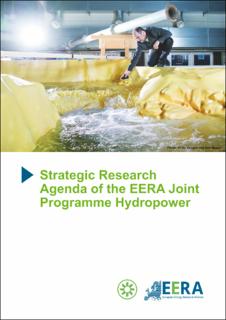| dc.description.abstract | The launch of a new EERA Joint Programme on Hydropower is good news for energy system in Europe and beyond.
The clean energy transition is necessary, demanding and accelerating. Hydropower in Europe and worldwide represents a significant tool for achieving this change sustainably. Hydropower holds capabilities for energy supply, storage, and regulation that are unique. These characteristics are needed to deliver security of supply, stability in the grid, and for green growth. Increasing the flexibility of the hydropower fleet through innovation and modernisation is fundamental for these objectives.
Hydropower has a lot to offer. It can provide water management capabilities, mitigating damage from flood and drought events; it will provide clean energy and available capacity for stable and secure supplies; it will balance intermittent production from solar and wind, and it is capable of storing energy, both in short and long-term horizons. Hydropower rates very well in comparison to other renewable electricity production sources, including storage: energy-payback ratio, life-cycle assessment, greenhouse-gas emissions, water footprint, and more. Adding to that, hydropower has the highest energy-conversion efficiency and longest operating life. Without research, demonstration and investment, none of these roles will be optimised for the future.
Europe is instrumental in leading the way towards decarbonisation through competence building and innovation. And the Joint Programme on hydropower represents a renewed focus on new roles and priorities for hydropower; we can no longer rely only on the mature solutions and methods; we need to bring our existing knowledge further. What happens in a power plant that shall handle thirty starts and stops each day? How can we utilise rotating mass to provide instant regulation for the system? How will power peaking affect the watercourse, and how can we integrate water management solutions together with power production, recreation and navigation?
New challenges present new opportunities, but also new needs for research and innovation. The Joint Programme on Hydropower in EERA comprises a large group of excellent and dedicated R&D-communities in Europe. Our joint eff orts will be a major hub for renewed research, supporting eff orts to modernise the European fleet and assist the rest of the world, where the largest potential for new hydropower development lies. My hopes and expectations for this initiative is that it will expand globally and be a platform for research on topics related to hydropower in a world-wide perspective.
The need for this initiative is clear, and everyone involved should be very proud of the launch of this platform. | en_US |
